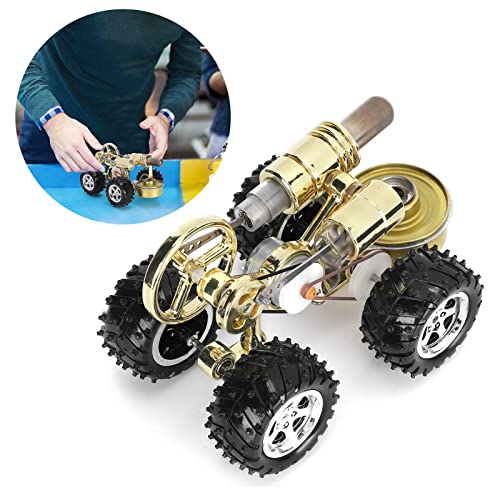peterl95124
Well-Known Member
- Joined
- Feb 22, 2020
- Messages
- 524
- Reaction score
- 343
The Trimble "hot" method for forming rings results in a ring with uniform contact and uniform wall pressure all the way around it when it is compressed into the cylinder, when the ring is not compressed into a cylinder it is not a perfect circle, if it were Trimble could have gotten away with just a perfectly round mandrel during heat treat and eliminated the dowel.
this makes me wonder about all the cold methods I've read about for making rings, and rather than trying to "do the math" here's how I think about them, what they're doing seems to me to be analogous to as if Trimble had used only a perfectly circular mandrel and not a dowel in the gap during heat treat.
the idea is you start with a ring who's circumference is oversize by about the same amount as the Trimble dowel, then cut out that much for the "when open" gap, then squeeze that ring into a cylinder (as part of centering the ring in a jig to hold it while turning the OD) so that the gap is closed. and there's the rub --- to squeeze the ring into a perfectly round cylinder it won't result in the "uniform wall pressure" that Trimble's method results in, in fact it most of it won't touch the centering cylinder, and those non touching portions are receiving zero inward force so after machining the OD they will have zero outward (installed cylinder wall) force.
to obtain Trimble's "uniform wall pressure" the ring would have to be contracted by *pulling* the gap closed (the opposite of Trimble's pushing the gap open) along the "zero stress line" of the ring (essentially its mid diameter for all practical purposes) without any other forces, in particular no inward forces on the sides of the ring by any jig centering cylinder, and then machining it. but I don't think even superglue could hold a ring closed at the gap. I think perhaps a tight string around the ring holding it shut would have the right effect or near enough so, but I don't see any practical way to do this either.
and yet lots of people have made "cold" rings and claim they have worked and I have no reason to doubt them.
perhaps the cold formed rings work because they seal good enough for the intake stroke, and I think everyone agrees that it doesn't matter for the compression and expansion strokes because then its the high pressure in the cylinder getting behind the ring that provides the vast majority of the wall sealing force. And perhaps because no one runs a model engine long enough to notice that they wear unevenly due to uneven wall pressure (or maybe they don't because most of the wall pressure is from high cylinder air pressure).
thoughts ?
comments ?
opinions ?
here's the math ?
this makes me wonder about all the cold methods I've read about for making rings, and rather than trying to "do the math" here's how I think about them, what they're doing seems to me to be analogous to as if Trimble had used only a perfectly circular mandrel and not a dowel in the gap during heat treat.
the idea is you start with a ring who's circumference is oversize by about the same amount as the Trimble dowel, then cut out that much for the "when open" gap, then squeeze that ring into a cylinder (as part of centering the ring in a jig to hold it while turning the OD) so that the gap is closed. and there's the rub --- to squeeze the ring into a perfectly round cylinder it won't result in the "uniform wall pressure" that Trimble's method results in, in fact it most of it won't touch the centering cylinder, and those non touching portions are receiving zero inward force so after machining the OD they will have zero outward (installed cylinder wall) force.
to obtain Trimble's "uniform wall pressure" the ring would have to be contracted by *pulling* the gap closed (the opposite of Trimble's pushing the gap open) along the "zero stress line" of the ring (essentially its mid diameter for all practical purposes) without any other forces, in particular no inward forces on the sides of the ring by any jig centering cylinder, and then machining it. but I don't think even superglue could hold a ring closed at the gap. I think perhaps a tight string around the ring holding it shut would have the right effect or near enough so, but I don't see any practical way to do this either.
and yet lots of people have made "cold" rings and claim they have worked and I have no reason to doubt them.
perhaps the cold formed rings work because they seal good enough for the intake stroke, and I think everyone agrees that it doesn't matter for the compression and expansion strokes because then its the high pressure in the cylinder getting behind the ring that provides the vast majority of the wall sealing force. And perhaps because no one runs a model engine long enough to notice that they wear unevenly due to uneven wall pressure (or maybe they don't because most of the wall pressure is from high cylinder air pressure).
thoughts ?
comments ?
opinions ?
here's the math ?
Last edited:





















































![TurboCAD 2020 Designer [PC Download]](https://m.media-amazon.com/images/I/51UKfAHH1LL._SL500_.jpg)








![DreamPlan Home Design and Landscaping Software Free for Windows [PC Download]](https://m.media-amazon.com/images/I/51kvZH2dVLL._SL500_.jpg)




![MeshMagic 3D Free 3D Modeling Software [Download]](https://m.media-amazon.com/images/I/B1U+p8ewjGS._SL500_.png)


